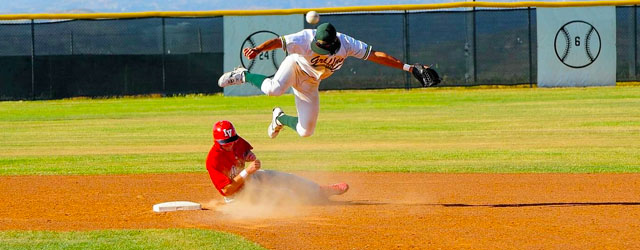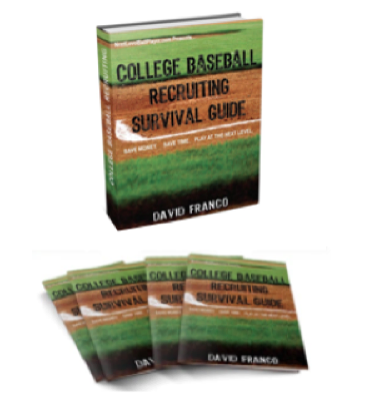This is Part 3 of Recruiting from the College’s Perspective by Jeff Opalewski. If you missed the first two posts, you can find them by following these links: Part 1, Part 2.

As we continue examining the recruiting process from the college baseball coach’s perspective, the next topic is most likely the one that people would immediately identify with when they think about recruiting. The evaluation of players is based upon the 5 tool grading scale. This scale has been around much longer than you or I, yet it is still essential when it comes to determining how a particular player will help you win games.
The 5 Tools
Arm Strength
Simply put the arm strength tool is a measure of how fast a player can throw a baseball. Other factors to be considered are accuracy of throws and time it takes a player to release the ball.
Running Ability
This tool measures how fast a player can run. For some reason the generally accepted distance we use to determine this is the 60 yard dash-though it really isn’t a very practical test. Better indications are in game home to first times and steal times. Other objective aspects covered under this tool are first step quickness and lateral quickness.
Fielding Ability
This tool becomes very position specific, as range is of the utmost importance for an outfielder since we typically assume a player will catch fly balls they get to. Also contributing to this grade for an outfielder are instincts and routes to the ball. Catching ability becomes a combination of footwork, blocking ability and receiving ability-some flexibility and quickness measures are also included. Infielders are graded on feet, hands or actions and body control. Arm strength also influences a player’s grade here even though it is important enough to be considered its own tool as well. This becomes a more difficult process as most high school players that are major college talents play shortstop or centerfield, yet we may be projecting how his skill set will play at another spot on the diamond.
Hitting Ability
If you want to see coaches and scouts disagree just ask them if they think a kid will hit or not. It is so difficult to determine who will continue hitting as the level of play increases and the pitching consistently improves. You need to see a hitter take a lot of at bats in an effort to gauge the ability to make adjustments. The more consistently a hitter puts the barrel on the ball the better this grade is. Bat speed, bat plane, balance and lower half involvement are some of the areas I try to grade.
Hitting Power
Within this tool there are two separate measures: raw power and game power. Raw power is simply how far a player hits the ball, basically the type of show he puts on in batting practice. The raw power grade is the ceiling for this tool. Game power is how often the raw power makes it into games against live pitchers trying to get the hitter out. Game power is almost a combination of raw power and hitting ability.
The College’s View
As a general rule of thumb a player needs to have at least 2 above average tools for a particular level of play in order to be an everyday player at that level. Also, certain tools are more important at certain positions, and every college identifies their own priorities based upon the style of play they intend to employ.
The second piece to this evaluation puzzle is projection and future grades. For the most part we as coaches go out to evaluate 16 and 17 year old young men. Of course we like to go find physically developed young men that have present tools that are good enough for them to be everyday players right away so we can get 3 or 4 good years out of the player. The tricky part is that there are not nearly enough of that type player out there each year for every program to complete their recruiting classes with guys like that. For everyone else we need to project what that player will be able to do with 25 pounds of muscle, or having shed 20 pounds of baby fat, or with a mechanical adjustment that a coach feels will help. Often times we are watching a player today envisioning what he will be able to do after two years in our program. This is where the body type of the player influences the projection. There is a reason why most big leaguers look the same. This is the most difficult part of the process, as no matter what you think there are never any guarantees, and without plus makeup and a great work ethic no player will ever reach with potential, which I will discuss in the next post.
There are other factors that go into this process as well, though they are much less consistent than the 5 tool system. Once a player is identified by a coaching staff as one that possesses the necessary skill set to help them win games, ultimately what determines how good that player will become is going to be makeup and work ethic. Everyone wants the physically developed, skilled players entering their program as freshmen. Four years later it’s the ones with great makeup and a great work ethic that end up being the best players.
——
If you are looking for more information on college baseball recruiting, check out this 42-page guide designed to help players and parents alike as they navigate through the recruiting process and help you take initiative in your own recruiting process. If you are a high school baseball player (or parent) who is not sure how the recruiting process works, then the College Baseball Recruiting Survival Guide is a must have. Click here to learn more.

Leave a Reply